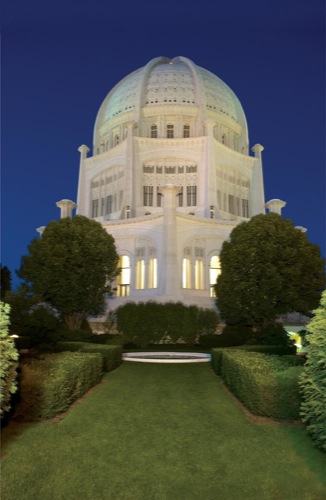
Courtesy Chicago’s North Shore
DuPage County
With nearly 920,000 residents in 38 communities over 300 square miles, DuPage County is Illinois’ second-most-populated county. Directly west of Chicago, the county is wealthy and conservative and is home to the headquarters of many Fortune 500 companies — including McDonald’s — as well as Fermilab and the Argonne National Laboratory.
It’s also home to world-class shopping. In DuPage County are the Oak Brook Center, the country’s largest open-air mall, and Chicago Premium Outlets. Both attract people from all over the world, said Julie Scholle, senior sales manager with the DuPage Convention and Visitors Bureau.
“The county offers a vast variety of attractions,” she said. “Our area is like a little melting pot of different things; there’s a little bit of something for everybody.”
Although DuPage has a plethora of modern attractions, many of its communities played pivotal roles in the Underground Railroad as “stations” for runaway slaves in the 1800s.
“We are kind of a thoroughfare of history with the Underground Railroad,” Scholle said.
Wheaton College in Wheaton, the Filer House in Glen Ellyn, the Peck House in Lombard, the Blodgett Home in Downers Grove and the Graue Mill and Museum in Oak Brook are a few of the remaining structures in DuPage County where abolitionists provided food, shelter and safety to fleeing slaves.
Another Underground Railroad station that is open for tours is the Sheldon Peck House in Lombard. Over the years, the 1839 farmhouse has served as the area’s first school, a stop on the Underground Railroad and home to noted 19th-century painter and portraitist Sheldon Peck. Peck’s descendants lived in the house until they donated it to the Lombard Historical Society in 1995.
Groups also enjoy Cantigny Park, a sprawling 500-acre park with two museums. The park began in the 1930s as Col. Robert McCormick’s experimental farm. McCormick was the editor and publisher of the Chicago Tribune for 44 years, and after his death in 1955, the land was transformed into a public park as directed in his will.
Today, Cantigny’s 22 individual gardens are spread across 29 acres and feature trees, shrubs, grasses and ornamental flowers. The McCormick Museum, in the former mansion, focuses on the life and family of Cantigny’s founder, and the First Division Museum explores American history through the eyes of the First Infantry Division.











